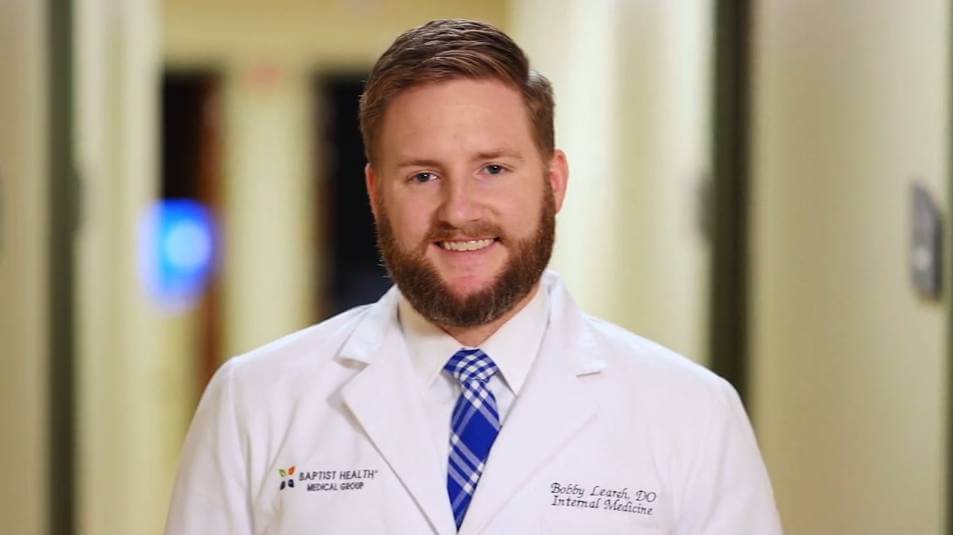Abdominal Aortic Aneurysms
Baptist Health Louisville: Abdominal Aortic Aneurysms
Vascular surgeon MATTHEW JUNG, MD discusses the importance of testing to detect abdominal aortic aneurysms early and describes how he uses stent grafting to treat aneurysms.
Abdominal Aortic Aneurysms Health Talks Transcript
Matthew Jung, MD
An aortic aneurysm is a dilated segment of artery and the biggest artery in the body. Most aneurysms in the aorta occur between the kidney arteries and the belly button and are called abdominal aortic aneurysms. The bigger the aneurysm, the more likely the risk of rupture, and a ruptured aneurysm is very hard to survive.
Ron Thomas, Elizabethtown
The aneurysm came as a total shock to me. I was not aware that I had the aortic aneurysm at all.
Matthew Jung, MD
Finding them before they become symptomatic is paramount, and obviously screening for them is what we’ve had to do. So, anyone over the age of 60 should be tested. Anyone who has a family history should be tested at an earlier age, even as early as 45 or 50.
Ron Thomas
He showed me the aneurysm. He said this is not something that we need to decide are we going to do anything. We need to decide how we’re gonna do it.
Matthew Jung, MD
Aortic stent grafting is an attempt to place a metal stent that’s combined with a graft fabric up into the aneurysm. We basically assemble these stents inside the aneurysm, as you can see we have to seal them, somewhere between the kidney arteries, and into the leg arteries. Basically this technology has allowed us to treat aneurysms minimally invasively, meaning going from the groin instead of making a very large incision in the body to try to get down to this vessel.
Ron Thomas
I have the utmost respect and care for Dr. Jung and for Baptist Health.



